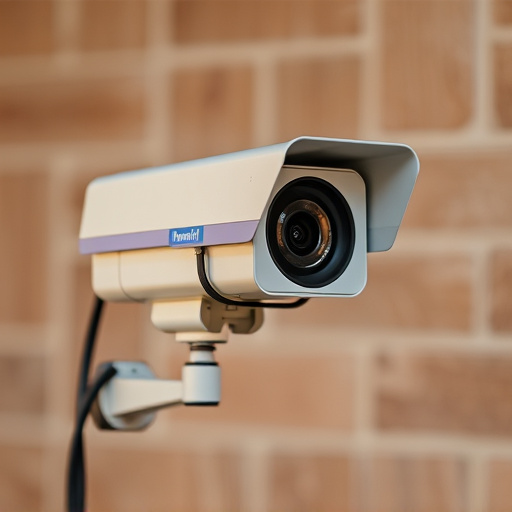Dummy security cameras significantly deter crime by simulating surveillance, reducing theft and vandalism through psychological deterrence. Strategically placed in high-risk areas, they enhance security and create a sense of safety. Balancing visibility, realism, and subtlety maximises their effectiveness. Hidden placement and realistic movement increase their crime-deterring capabilities, making them valuable tools for community safety.
“Do dummy security cameras deter crime? Explore the strategic placement of these decoys to enhance neighborhood safety. This comprehensive guide delves into the surprising effectiveness of dummy surveillance cameras in crime prevention. From understanding their role in deterring potential criminals to mastering key placement techniques, we uncover optimal visual coverage strategies. Avoid common setup mistakes and gain insights from real-world success stories. Empower yourself with the knowledge to fortify your surroundings.”
- Understanding Dummy Cameras' Role in Crime Deterrence
- Key Placement Strategies for Optimal Visual Coverage
- Common Mistakes to Avoid When Setting Up Dummy Surveillance
- Real-World Examples of Successful Dummy Camera Deployments
Understanding Dummy Cameras' Role in Crime Deterrence
Dummy security cameras, while seemingly passive, play a crucial role in crime deterrence. Their mere presence can act as a powerful psychological deterrent, making potential criminals think twice before committing an act. Research has shown that areas with visible dummy cameras experience lower rates of theft and vandalism compared to those without. This is because would-be offenders are less likely to engage in illegal activities if they believe their actions are being watched.
The effectiveness lies in the cameras’ ability to simulate real surveillance, creating an environment where people feel more secure. Dummy cams are especially useful in parking lots, outdoor spaces, and businesses with high foot traffic. By strategically placing these cameras, property owners and managers can send a clear message that any suspicious behavior will be monitored and potentially result in swift consequences.
Key Placement Strategies for Optimal Visual Coverage
Optimal dummy surveillance camera placement involves strategic positioning to achieve maximum visual coverage while deterring potential criminals. Key strategies include mounting cameras at eye level or slightly elevated to capture clear, unobstructed views, ensuring they are visible with minimal obstructions like trees or signs. Strategically placing these dummy cameras in high-risk areas such as entry points, parking lots, and common gathering spots creates a sense of security, deterring offenders due to the belief that their actions are being monitored.
The effective use of dummy security cameras is not merely about physical placement; it’s also about enhancing the perception of safety. Well-placed cameras should be clearly visible, with realistic appearances that blend seamlessly into the environment without looking overly obtrusive. This balance ensures that the cameras serve both as a deterrent and a reliable monitoring tool, contributing to a safer community. Remember, while dummy cameras are an important component of security, they function best when coupled with robust lighting, signage indicating surveillance, and regular maintenance to ensure their continued effectiveness in deterring crime.
Common Mistakes to Avoid When Setting Up Dummy Surveillance
When setting up dummy surveillance cameras, there are several common mistakes that homeowners and businesses often make. One of the primary blunders is placing them in obvious locations where criminals can easily spot them, defeating the purpose of a deterrent. Dummy cameras should be strategically positioned in inconspicuous areas to maximize their effectiveness as crime preventers. For instance, avoid mounting them directly on walls or in plain view from streets or windows.
Another mistake is neglecting to mimic real camera activity. Static and motionless dummy cameras may not appear as convincing to potential intruders. To enhance realism, consider using models with blinking lights or slight camera movements to create the illusion of active surveillance. This strategy significantly improves their ability to deter crime, as would-be offenders are less likely to target locations where they believe security measures are robust.
Real-World Examples of Successful Dummy Camera Deployments
In many real-world scenarios, dummy surveillance cameras have proven to be effective deterrents for crime. For instance, in urban areas with high rates of property crimes, deploying strategically placed dummy cameras has shown significant reductions in break-ins and thefts. Businesses often use these decoys to protect their assets; a well-positioned dummy camera can discourage would-be thieves from targeting an establishment.
A successful example is seen in small towns where local governments installed dummy cameras as part of a community safety initiative. This led to a notable decrease in public space crimes, with residents feeling safer and more secure. Such deployments illustrate that while dummy security cameras may not always capture actual incidents, their mere presence can significantly alter criminal behavior, making them valuable tools for enhancing community safety.
Dummy security cameras have proven to be effective in enhancing crime deterrence, offering a cost-efficient solution for property owners and businesses. By strategically placing these decoys, you can create the illusion of increased surveillance, potentially discouraging criminal activity. Key placement involves considering angles, visibility, and coverage, while avoiding common pitfalls such as obvious positioning or lack of integration with real cameras. Successful deployments across various settings demonstrate that dummy cameras, when used correctly, can significantly improve security without breaking the bank. When it comes to do dummy security cameras deter crime, the answer is a resounding yes—as long as they’re placed thoughtfully and in conjunction with other security measures.
